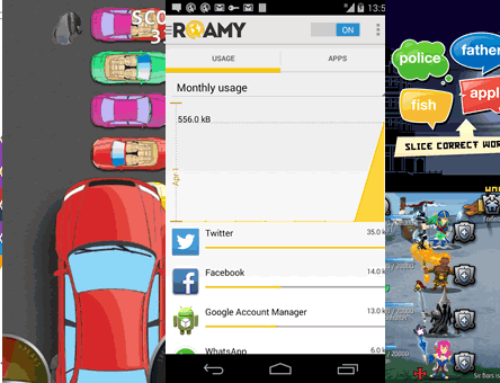Overview
About 15 years ago I watched one of the best movies surrounding the story of a pianist. “Legend of 1900” was the movie, a recommendation for anyone that values piano music. I was so impressed that I decide I’m going to learn something about piano music, though I got discouraged that there were so few affordable learning solutions. Piano is still a musical instrument that transmits a classical vibe, doing this since the 17th century when it was invented. Back to the movie, there was a special scene that represents the core of the movie and shows what a piano can do in the hands of an expert. It’s a duel between a famous piano player and a self-taught one, a 14 minute scene that’s worth watching if you don’t have any plans of watching the whole movie:
Impressive, that’s the word you’re looking for. Unfortunately if you’ve passed a certain age it’s probably too late to become a professional piano player. That doesn’t mean you shouldn’t try, but don’t get your hopes too high. However if you already have some base knowledge about music in general and piano in particular, it’s a good time to start learning again and practice your music skills. Unlike 15 years ago when free learning solutions were scarce, with almost 1 billion apps in the Google Play store you will find an app that lets you learn what you want. “Perfect Ear 2” is one of those Android music apps that helps you train your ear and help the musician in you.
The app
Developed by EduckApps, Perfect Ear 2 is an improved version of its predecessor (Perfect Ear 1, duh), a popular ear training solution for musicians as you can see from its almost perfect rating (730+ votes). With the app you can train your ear through a series of predefined exercises or customize some of those to fit your need. Even better, it includes a series of training articles that are helpful, especially for amateurs. You can see a video presentation of the app below:
Perfect Ear 2 is targeted for musicians, amateur or professional, so it’s not a good fit if you don’t have already some musical knowledge. I don’t say this to discourage your future musical career (sic), I just mention it as you’ll have problems understanding all the exercises if you don’t have a musical basis already. However, one of the sections in this app has specific tutorials (lots of them), so you could start with those if you have trouble understanding what the exercises prepare you for. Here’s a list of features you will get when you install Perfect Ear 2:
- Interval exercises. In music theory, an interval is the difference between two pitches and can be horizontal, linear, or melodic (for successively sounding tones) or vertical/harmonic (for simultaneously sounding tones). There are three different categories of exercises that let you train in interval comparison, interval identification and interval singing. Each category actually contains a set of exercises (10-20), that either play sounds and ask you to pick an option from a given set, or let you sing your own answer (as it is the case with interval singing). You can customize exercises or add more, but not in the free version – the purchase is easily integrated in the app.
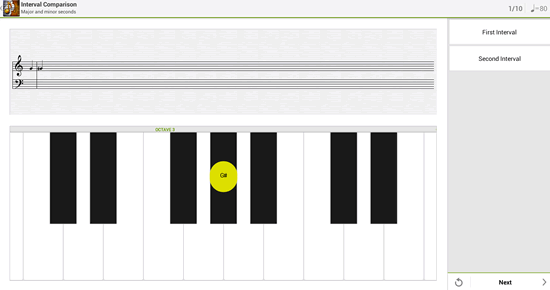
Interval comparison exercise in Perfect Ear
- Chord exercises. A musical chord is a set of two or more notes that is heard as if being played simultaneously. The most frequent used chords are the triads, called this way because they’re composed of three different notes. With “Perfect Ear 2” you’ll be able to exercise by identifying chords and also chord inversions (with more exercises coming soon).
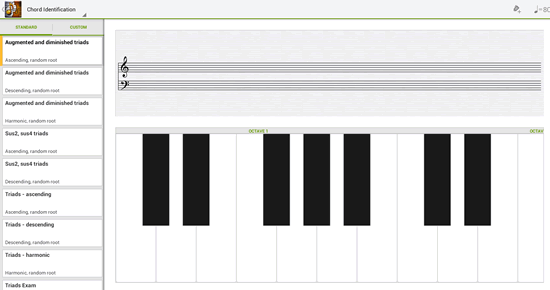
Chord identification exercise in Perfect Ear
- Scale exercises. In music, a scale is a set of notes ordered by pitch. If it’s ordered by increasing pitch then it’s an ascending scale, if it’s by decreasing pitch then it’s descending scale. With Perfect Ear 2 you’ll be able to exercise scale identification, where you have to recognize what type of scale you’ve just listened to. If you have trouble with that exercise, there’s another section called scales dictionary where you can listen to various scales and understand them better.
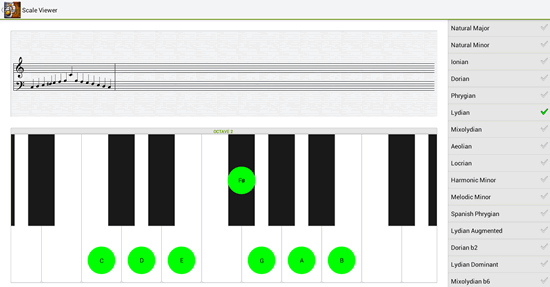
Scale dictionary to understand scales better
- Rhythm exercises. It’s unlikely that you don’t know what rhythm is (“rhythm is gonna get you”), but just in case you should know that technically it means any type of movement where a regulated succession of strong and light notes occurs. With this app you’ll be able to exercise rhythm reading, where you hear a particular rhythm and you have to tap on the metronome to match it, or rhythm dictation where you have to compose it yourself.
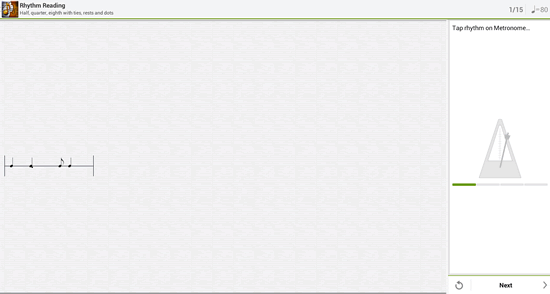
Rhythm reading exercise in Perfect Ear
- Absolute pitch training. Pitch allows ordering sounds on a frequency-related scale. Pitches can be related to as “higher” (i.e. my wife screaming at me) or “lower” where the intensity is reduced. Using Perfect Ear you’ll be able to train yourself by identifying notes or singing them.
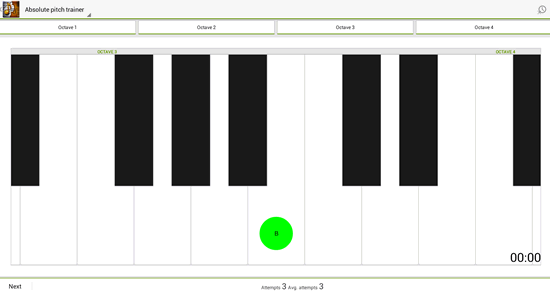
Pitch training exercise in Perfect Ear
- Custom practice. In the free version you don’t have the ability to customize your exercises, but you can easily pay for these and be able to create your own custom exercises, custom scales and chords.
- Theory articles. Each major exercise category has its own article where the theory behind it is explained. It’s the part that you probably should start with, even if you’re familiar with the musical concepts in this app. So instead of taking the “try first, read manual later” approach, read first the articles: “Introduction to intervals/scales”, “Circle of fifths” (also an upcoming exercise), “Chords: Triads”, :Chords: Seventh Chords”, “Chord Inversions”, “Modes”, “Chromatic Scale” and “Rhythm”.
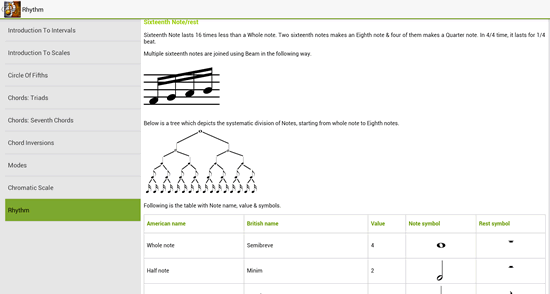
Training articles section
Conclusion
“Perfect Ear 2” also comes with quite some options which you can set to modify its default behavior. You can choose what instrument to use during the exercises, as keyboard (piano) is used by default but there’s also a guitar. You can decide if you want English and Romance fixed do note names and if you want to use audio samples for piano (this will require installing an additional realistic plugin).
In each exercise you’ll have to manually tap on the Next button to advance, but its options lets you choose if you want this process to be automatic. By default audio feedback will be played as you progress through an exercise, but that can be disabled as well as the tap sounds in rhythm exercises. Lastly, you can pick the difficulty for some exercises (i.e. rhythm), autostart voice recording (in the exercises where audio input is required) and associate your social networks.
“Perfect Ear 2” is ideal for musicians that want to improve their musical skills. It is a bit difficult though if you’re a novice as the exercises throw you right in the middle of the problem without any explanations. My suggestion is to start with the training articles and understand those perfectly before taking any exercises.
You can download the app directly from Google Play: Download Perfect Ear 2. The author also created a community for this app so if you want to be notified on new releases/features join it at Google+.

Name: Perfect Ear 2
Developer: EDuckApps
Size: 4.1Mb
Package: com.evilduck.musiciankit.apk
Version: 1.0.6e
Last update: November 29, 2013
Price: Free



